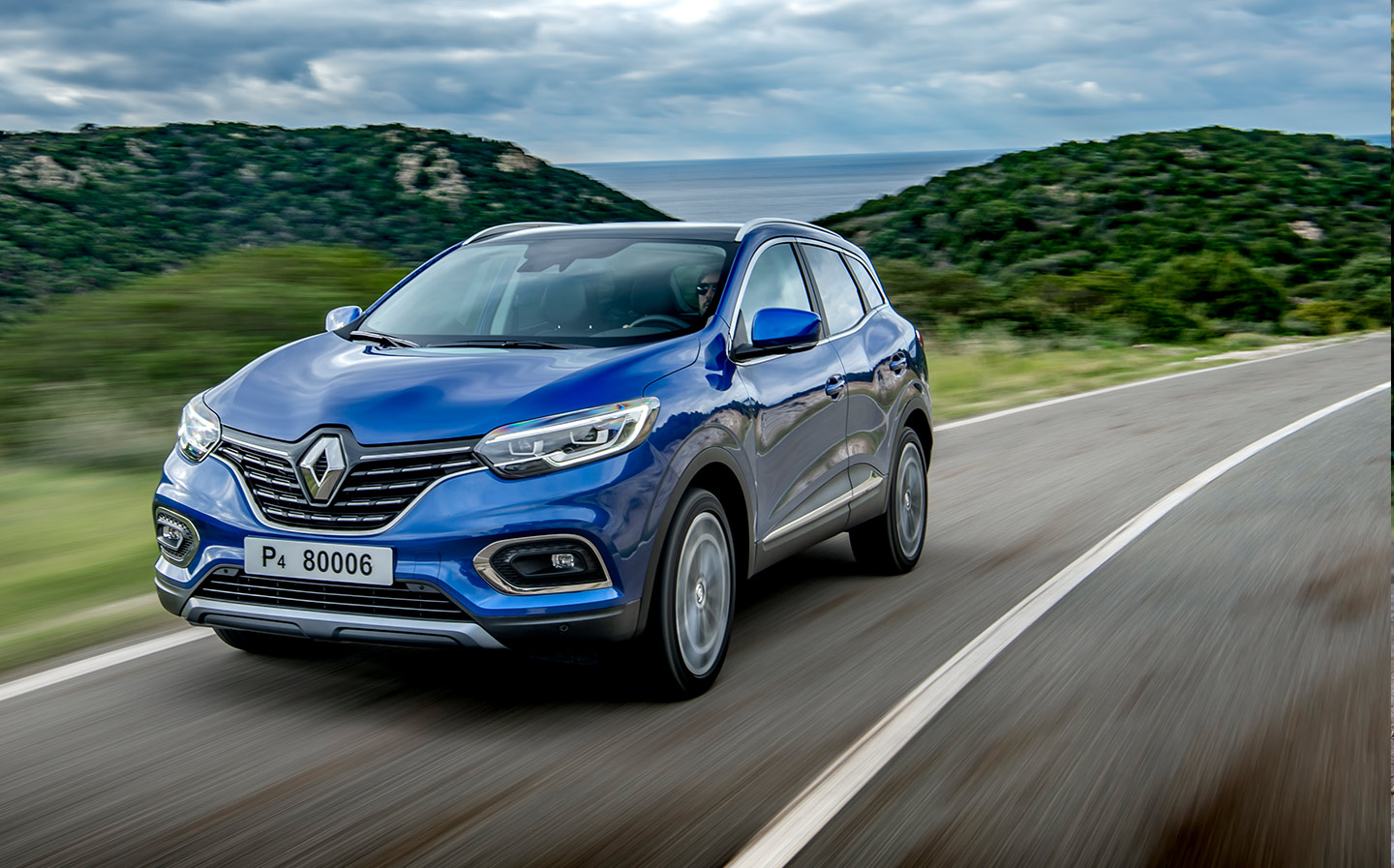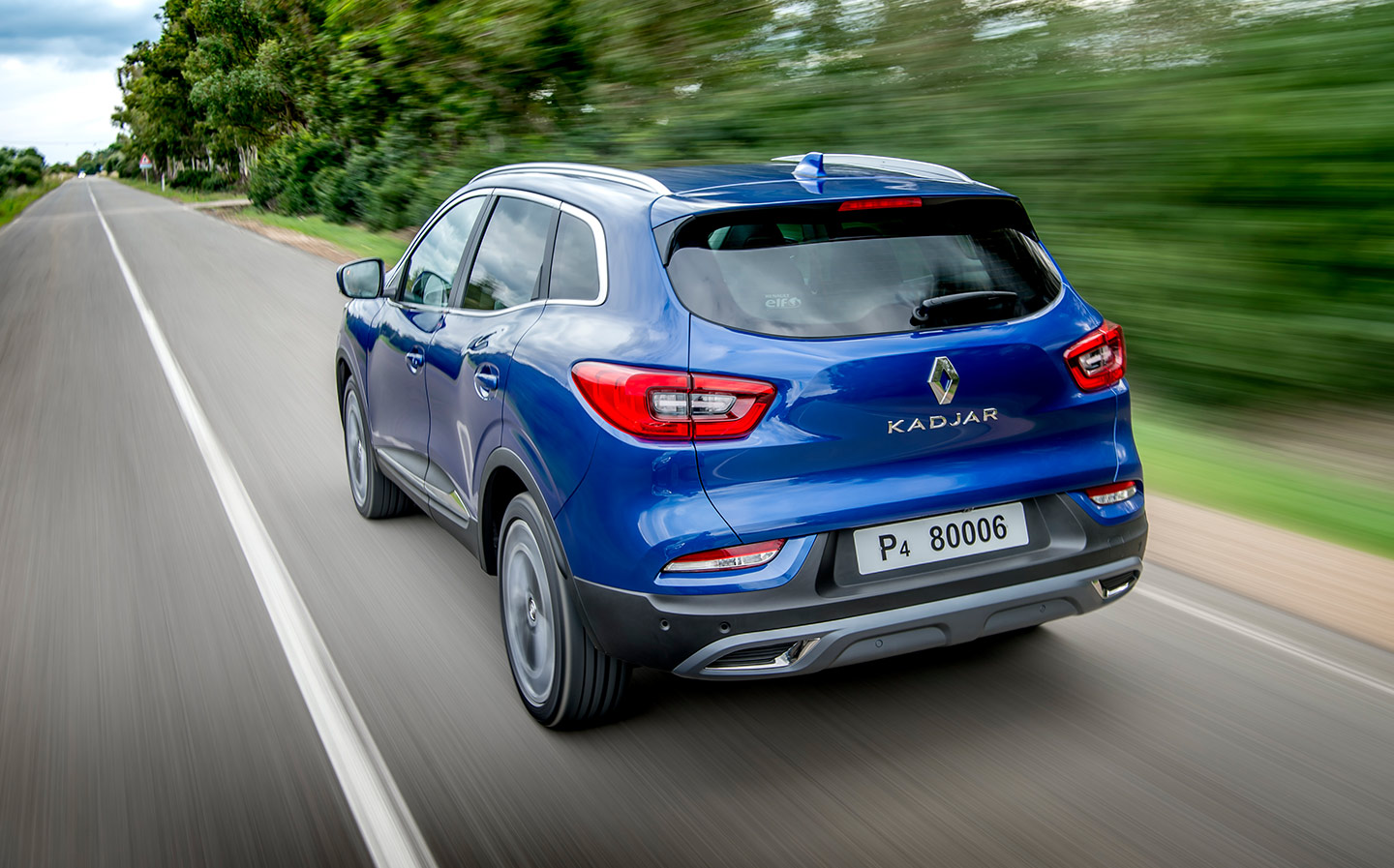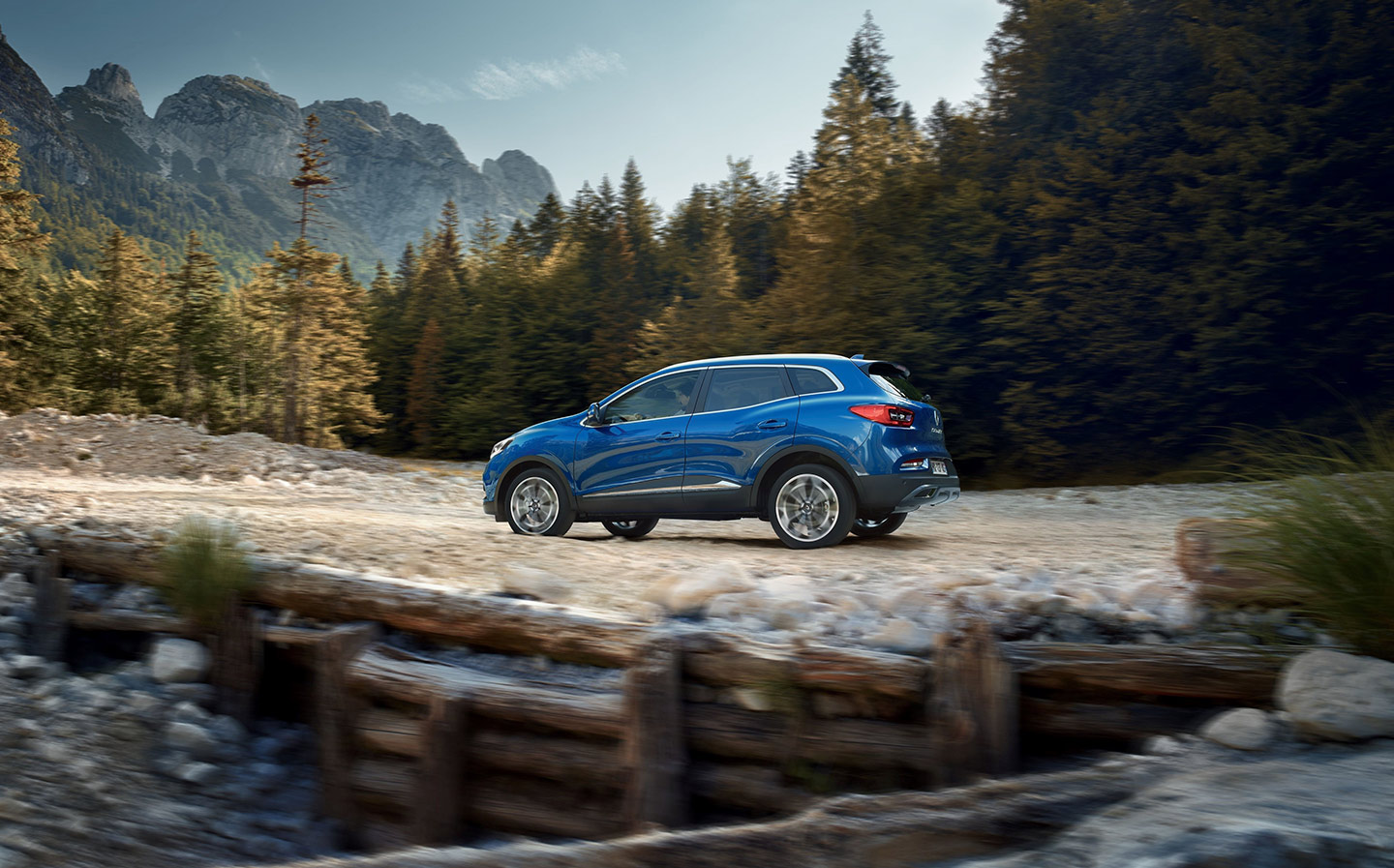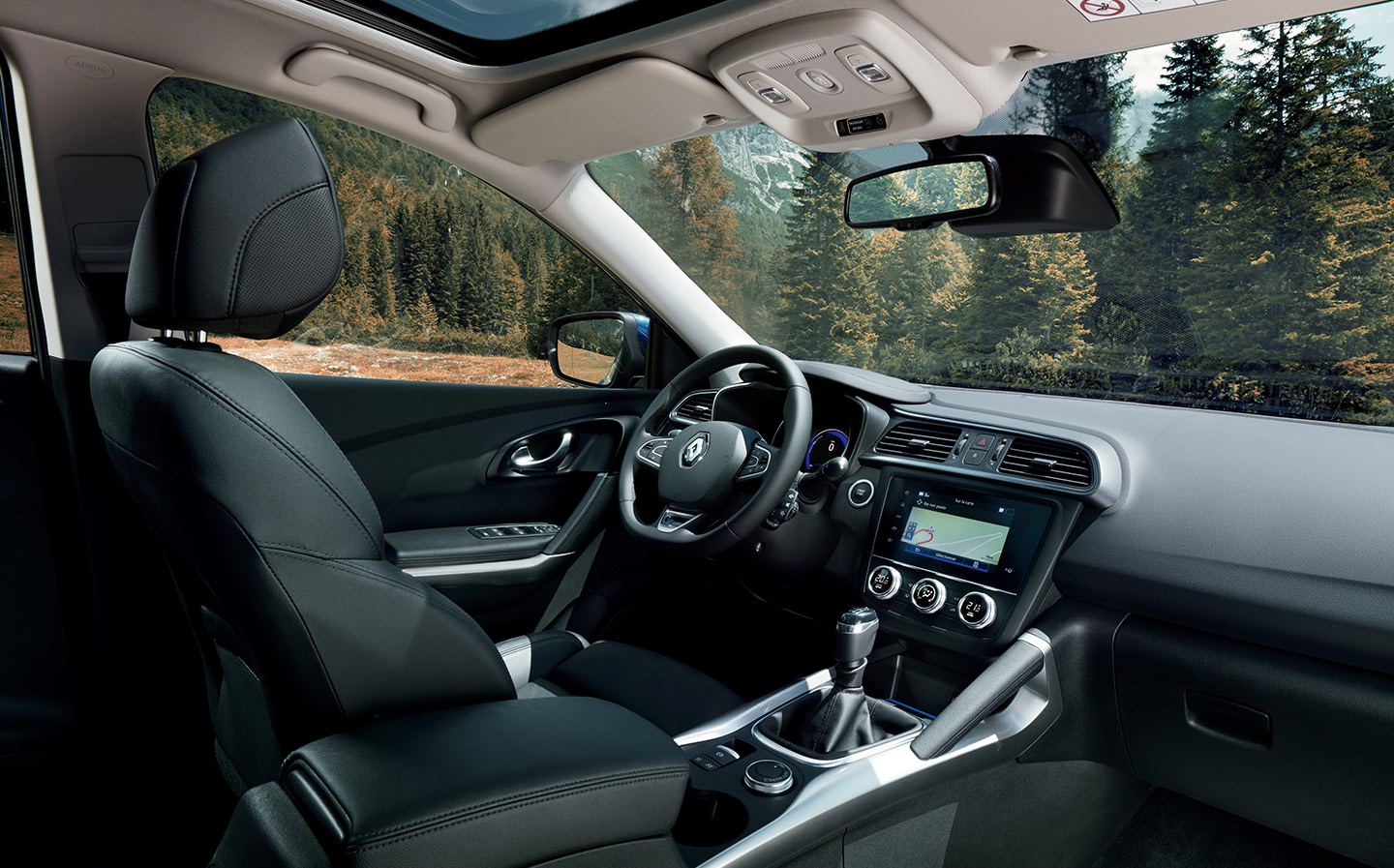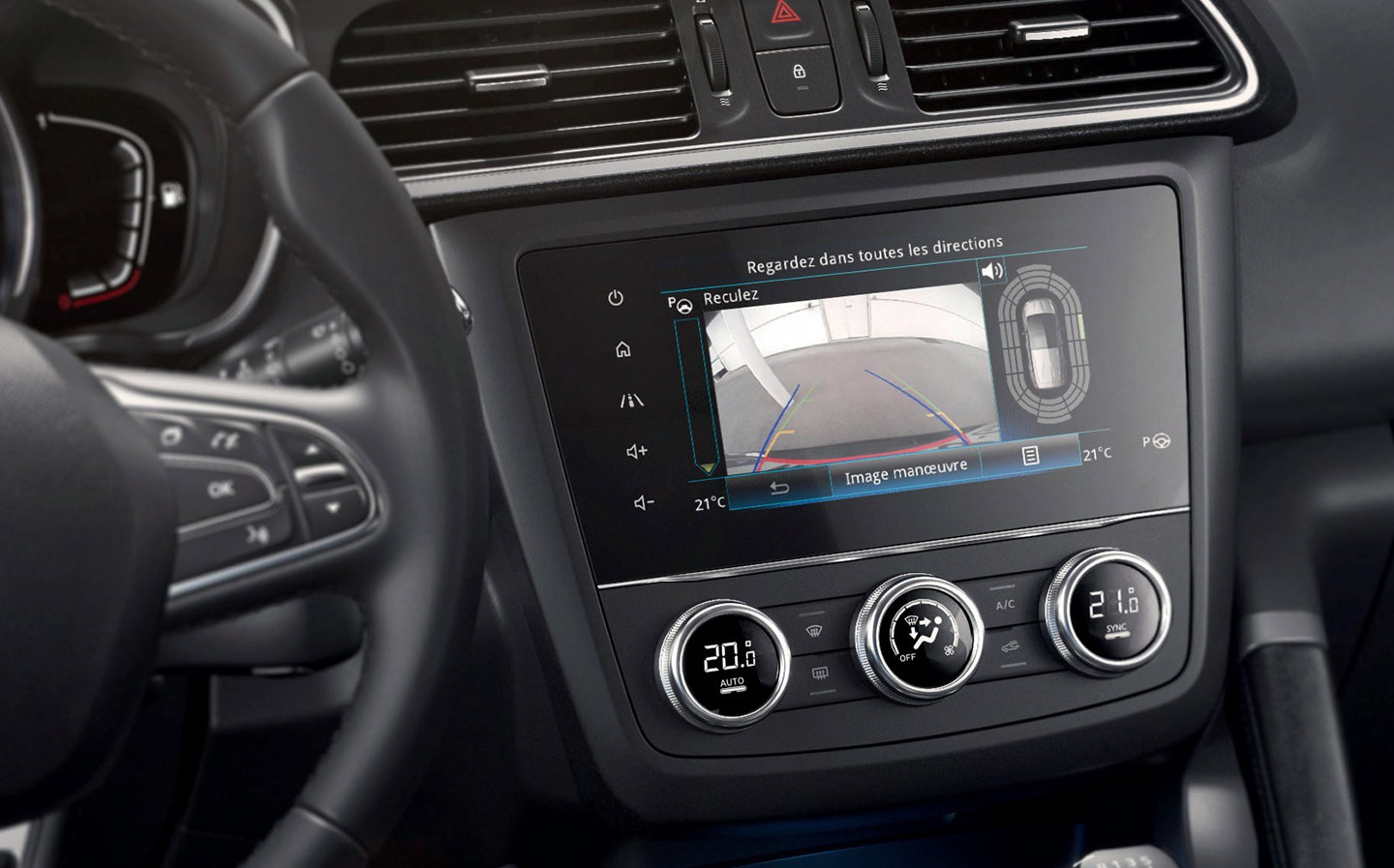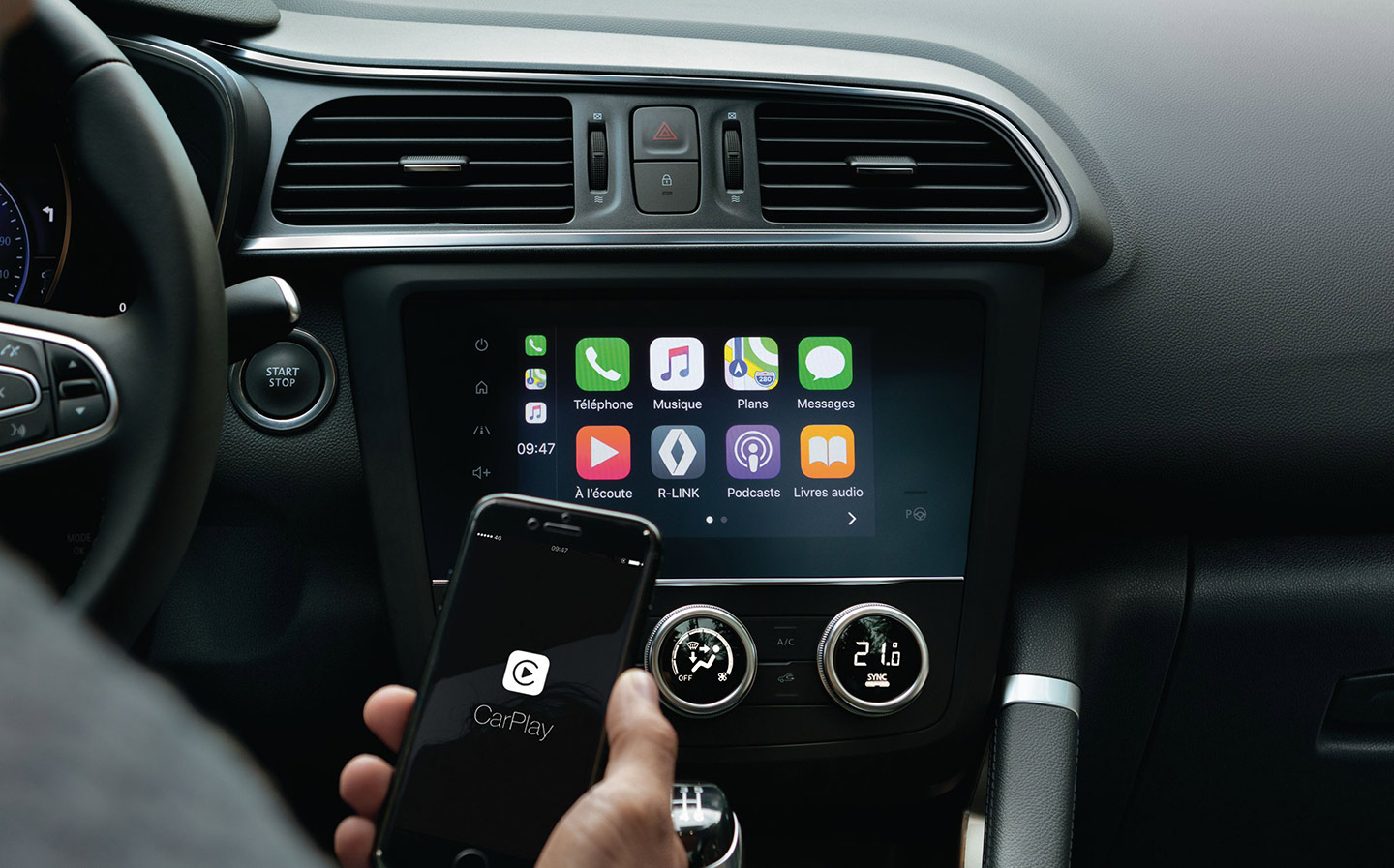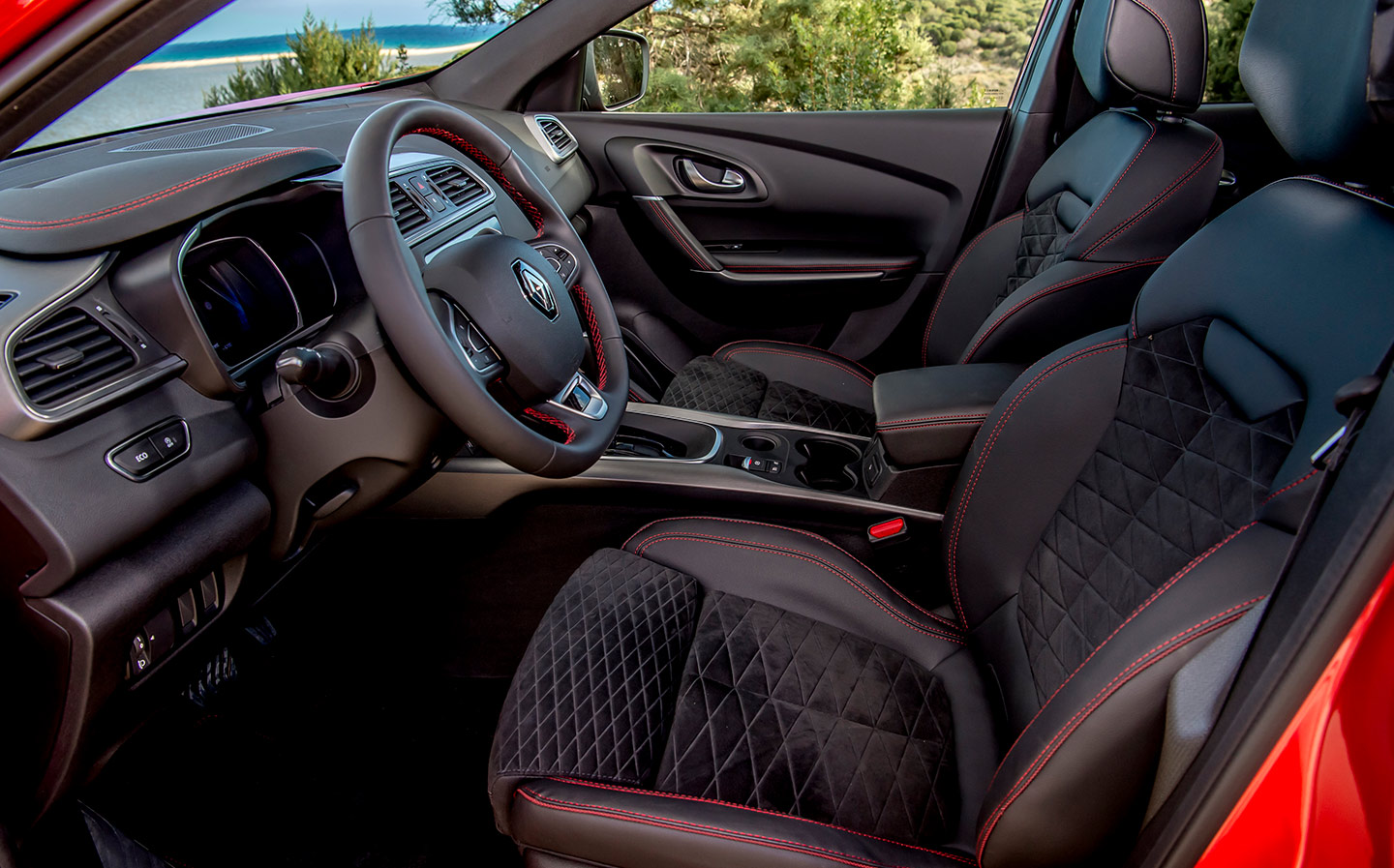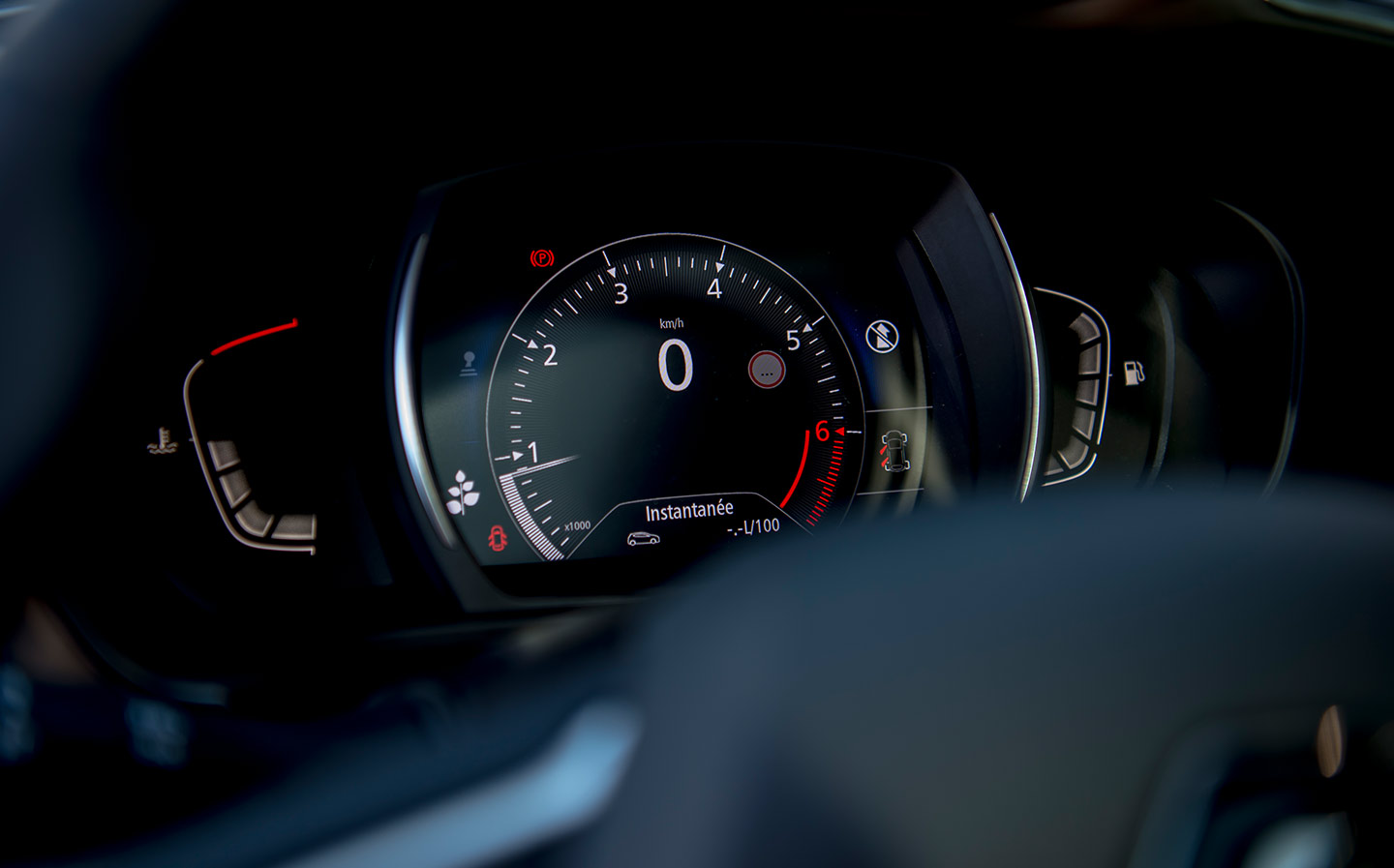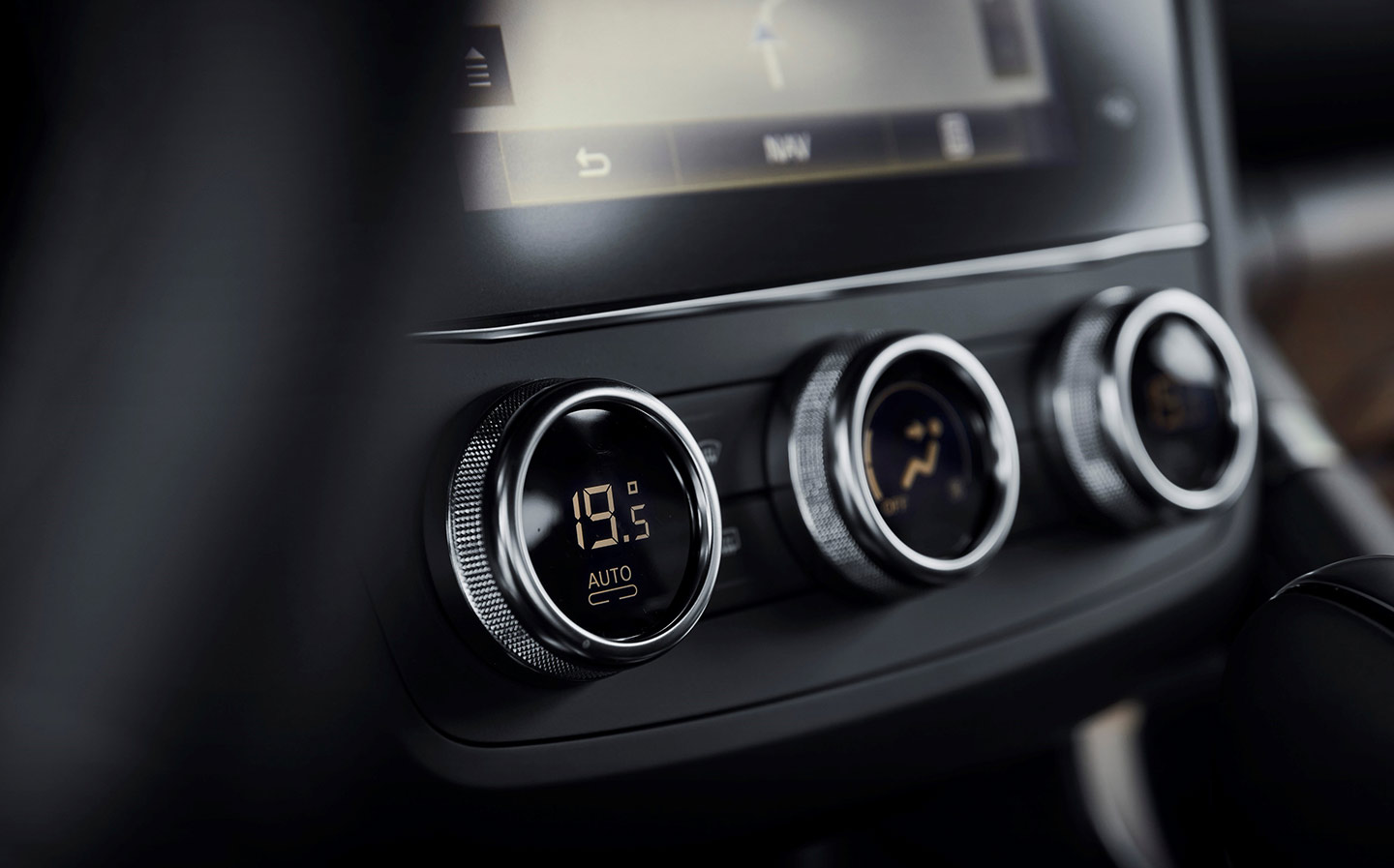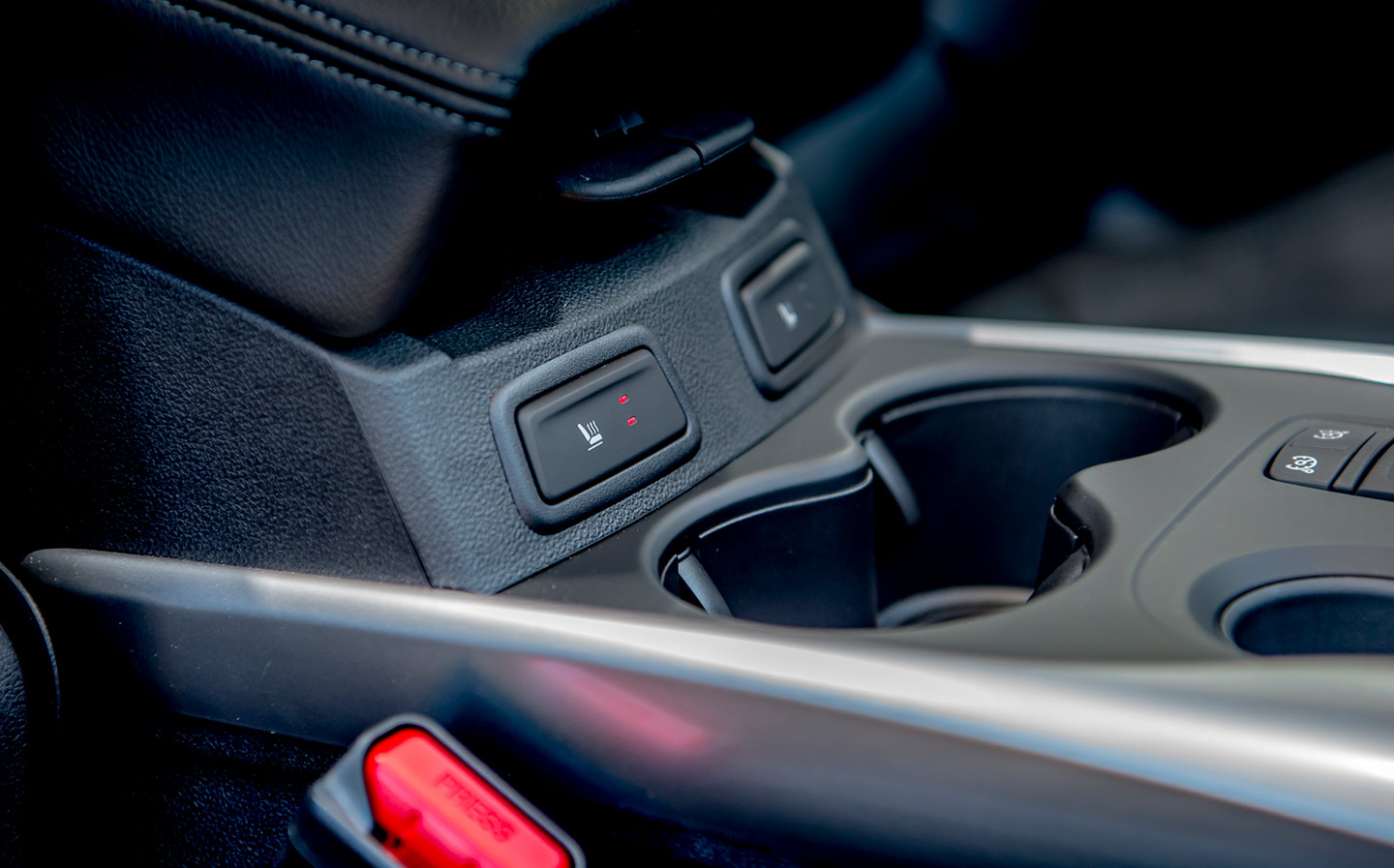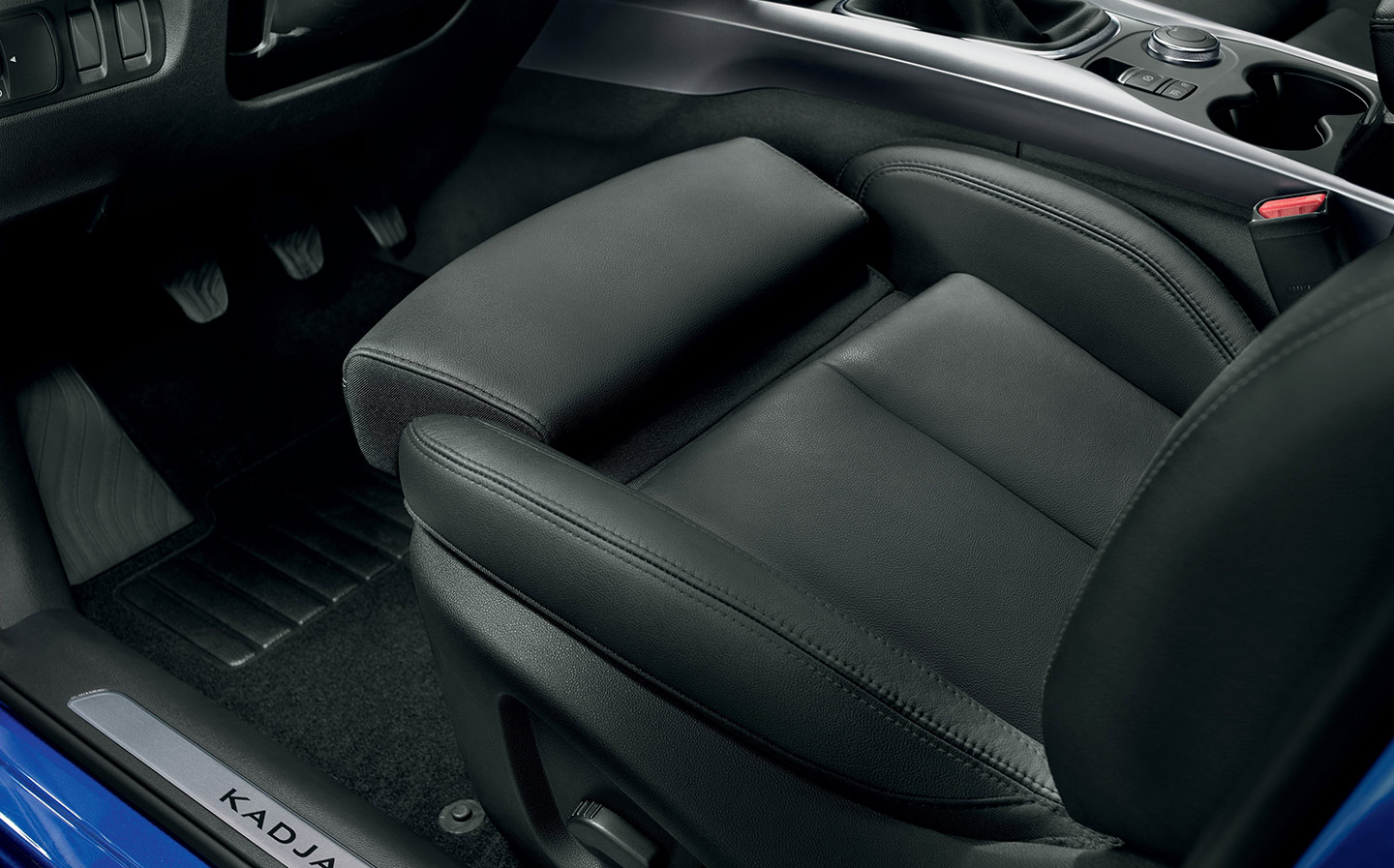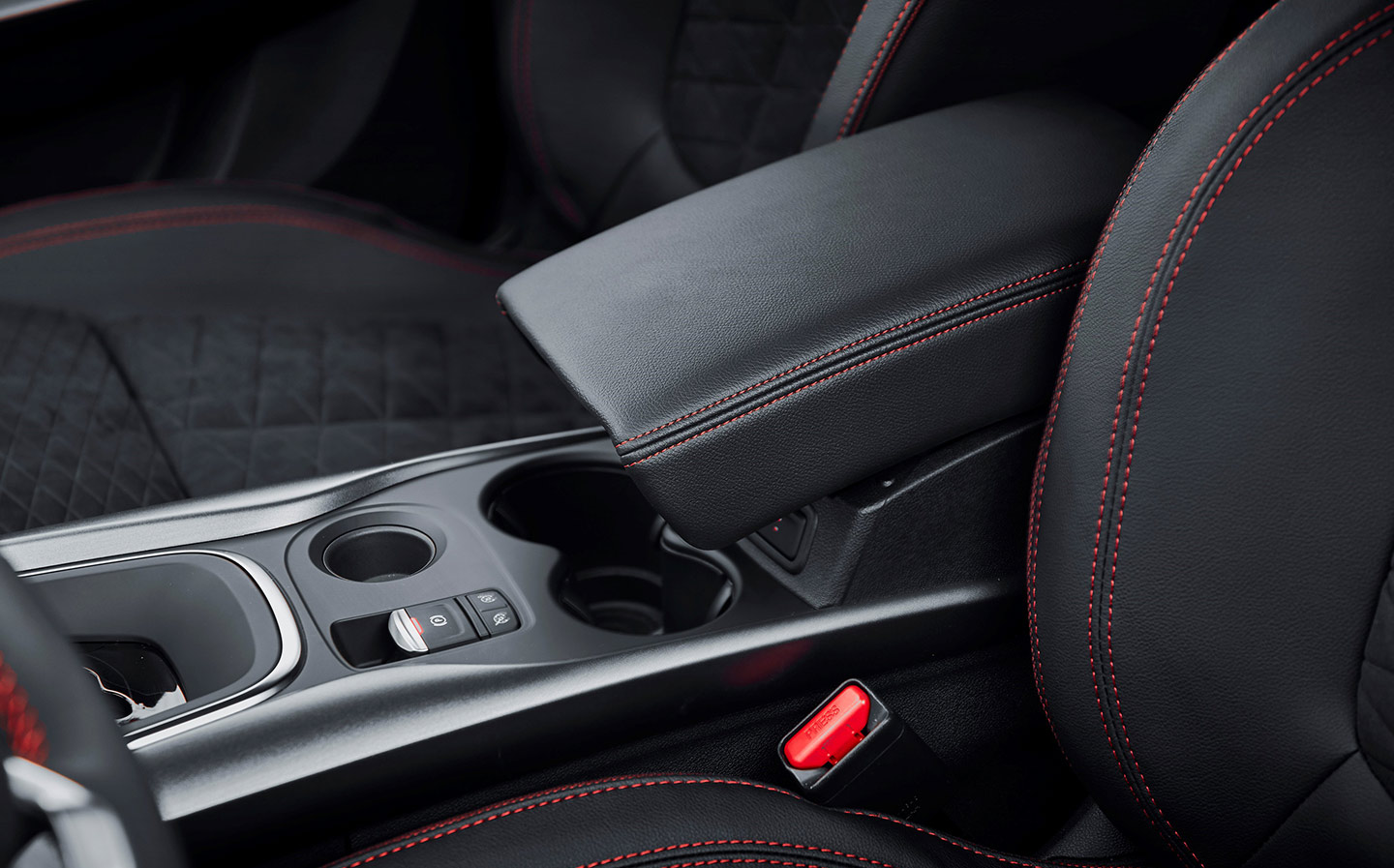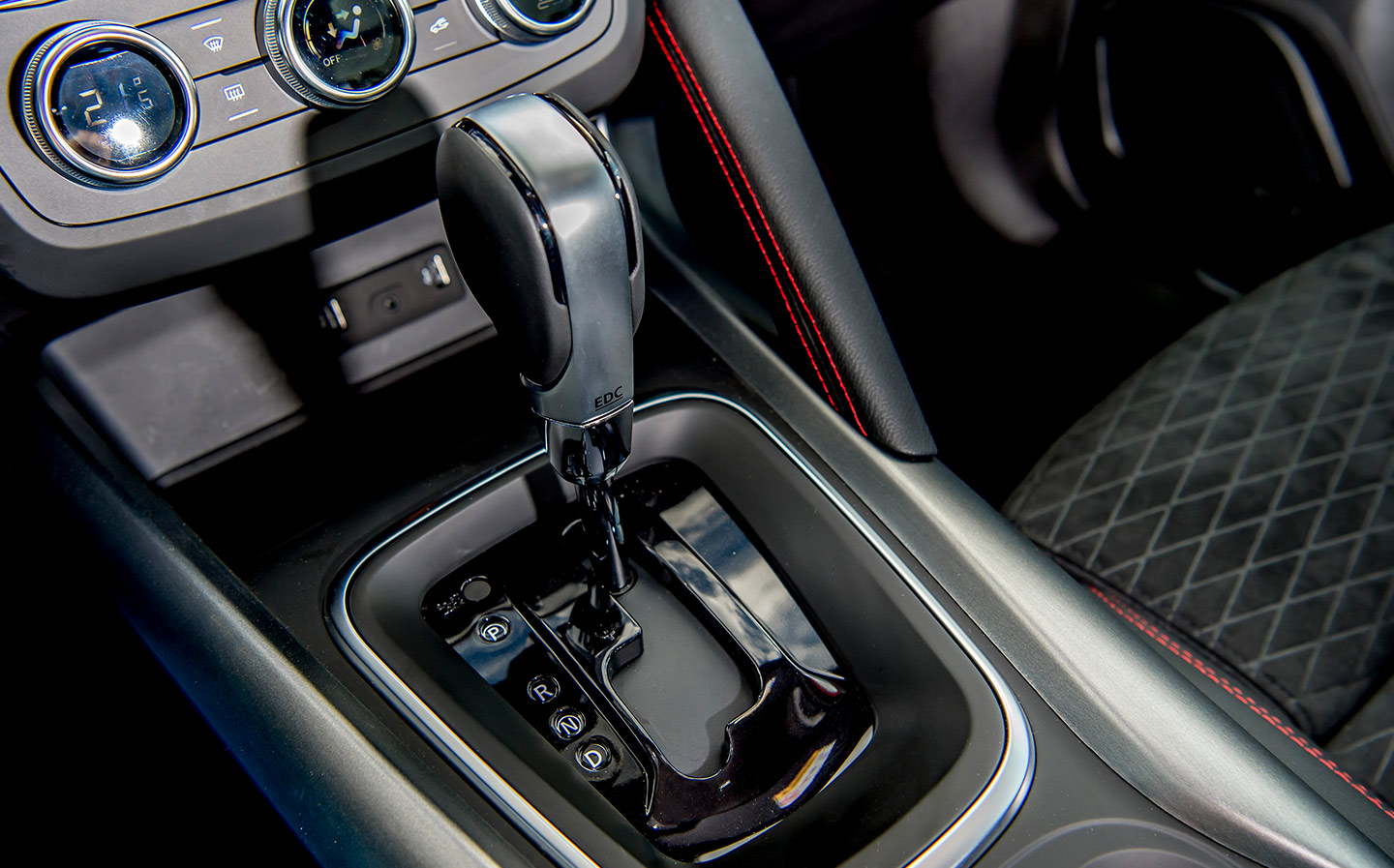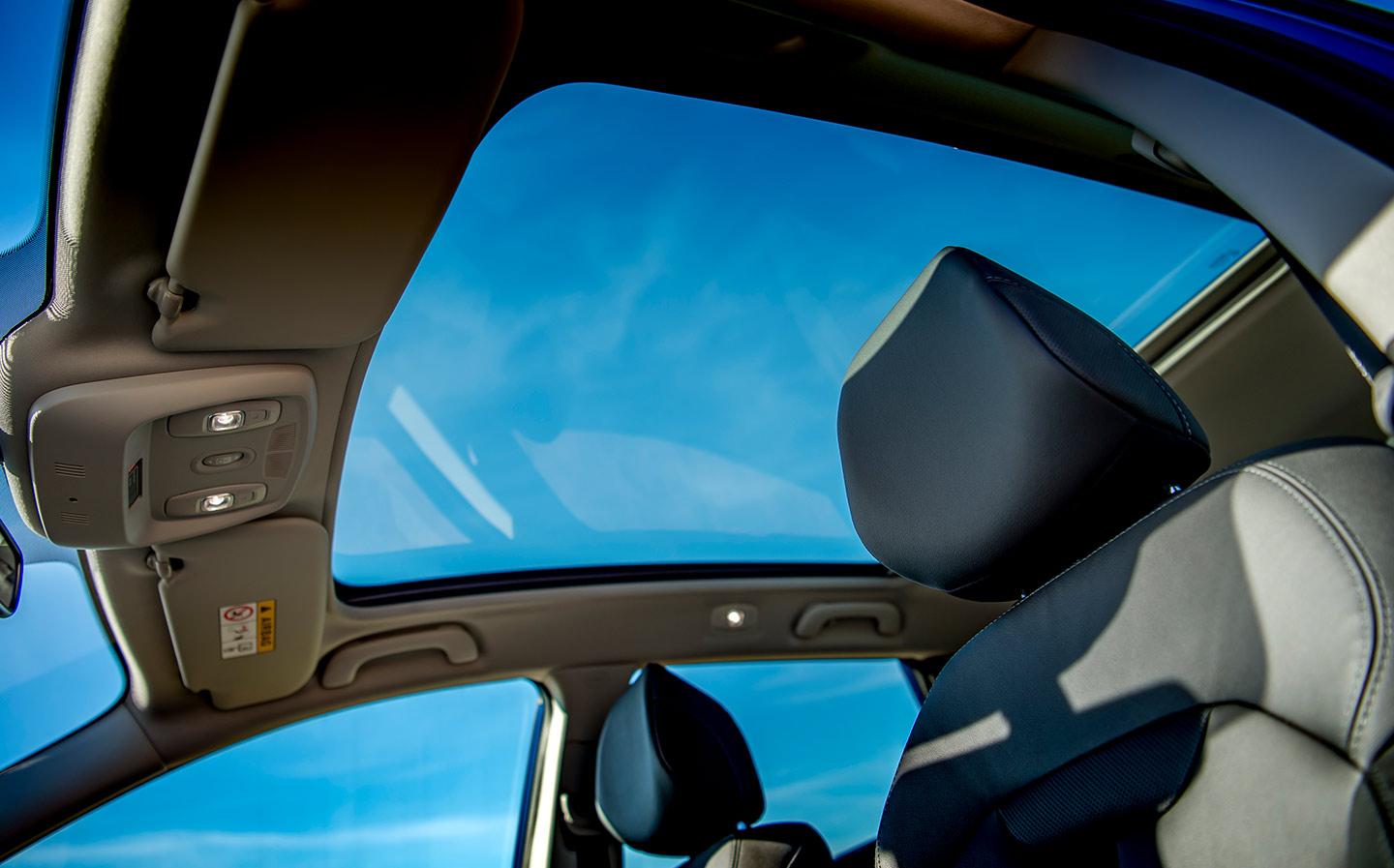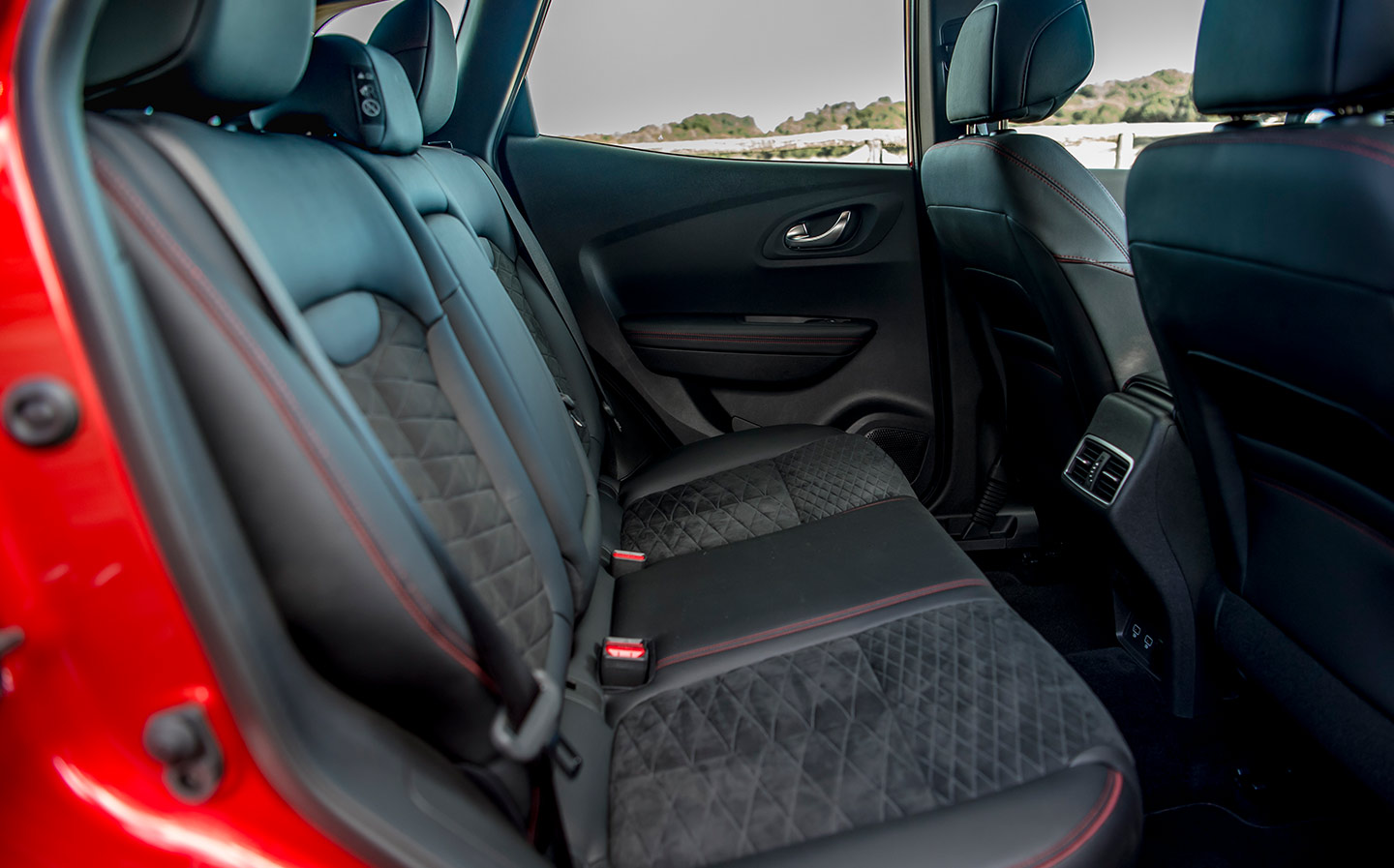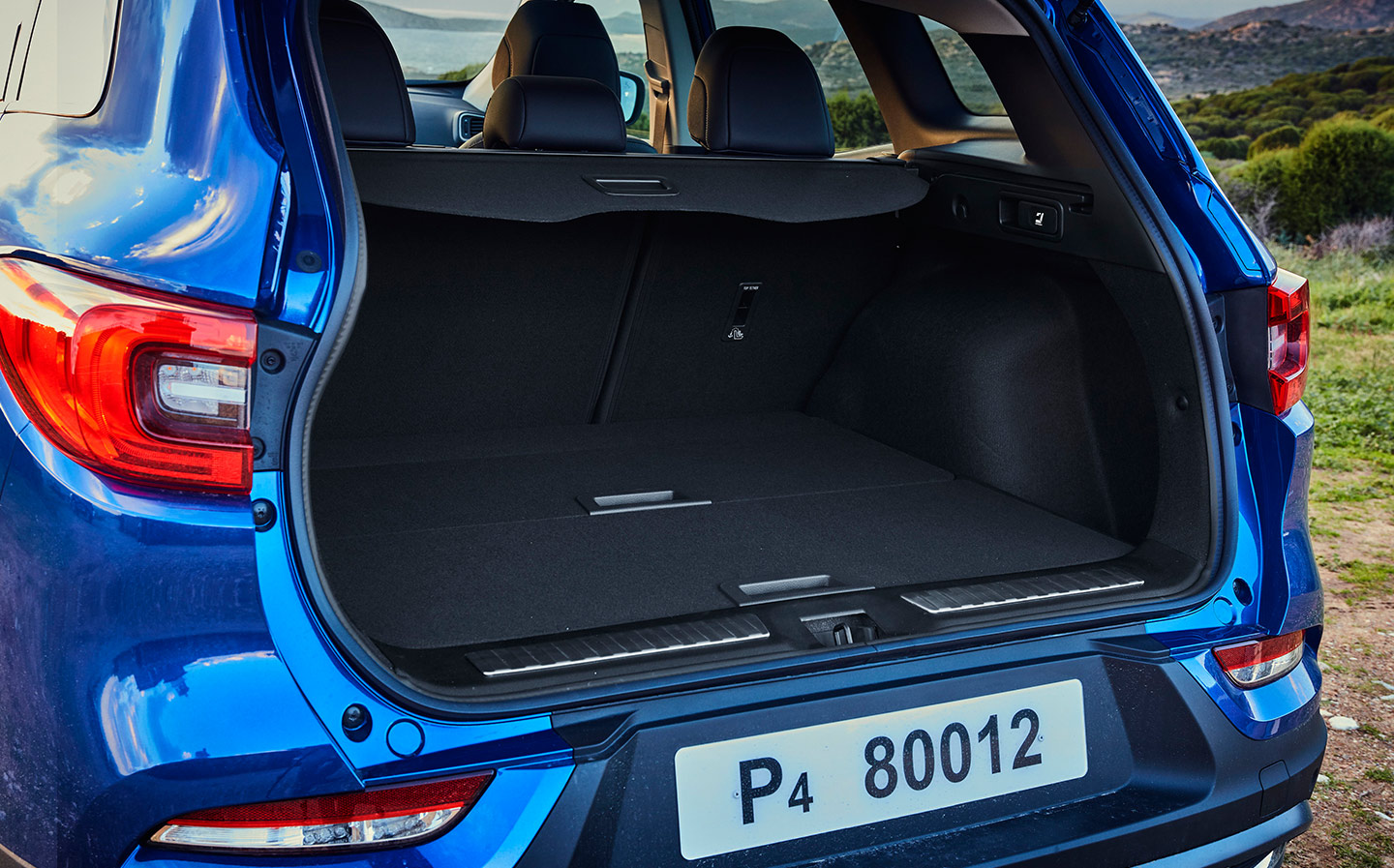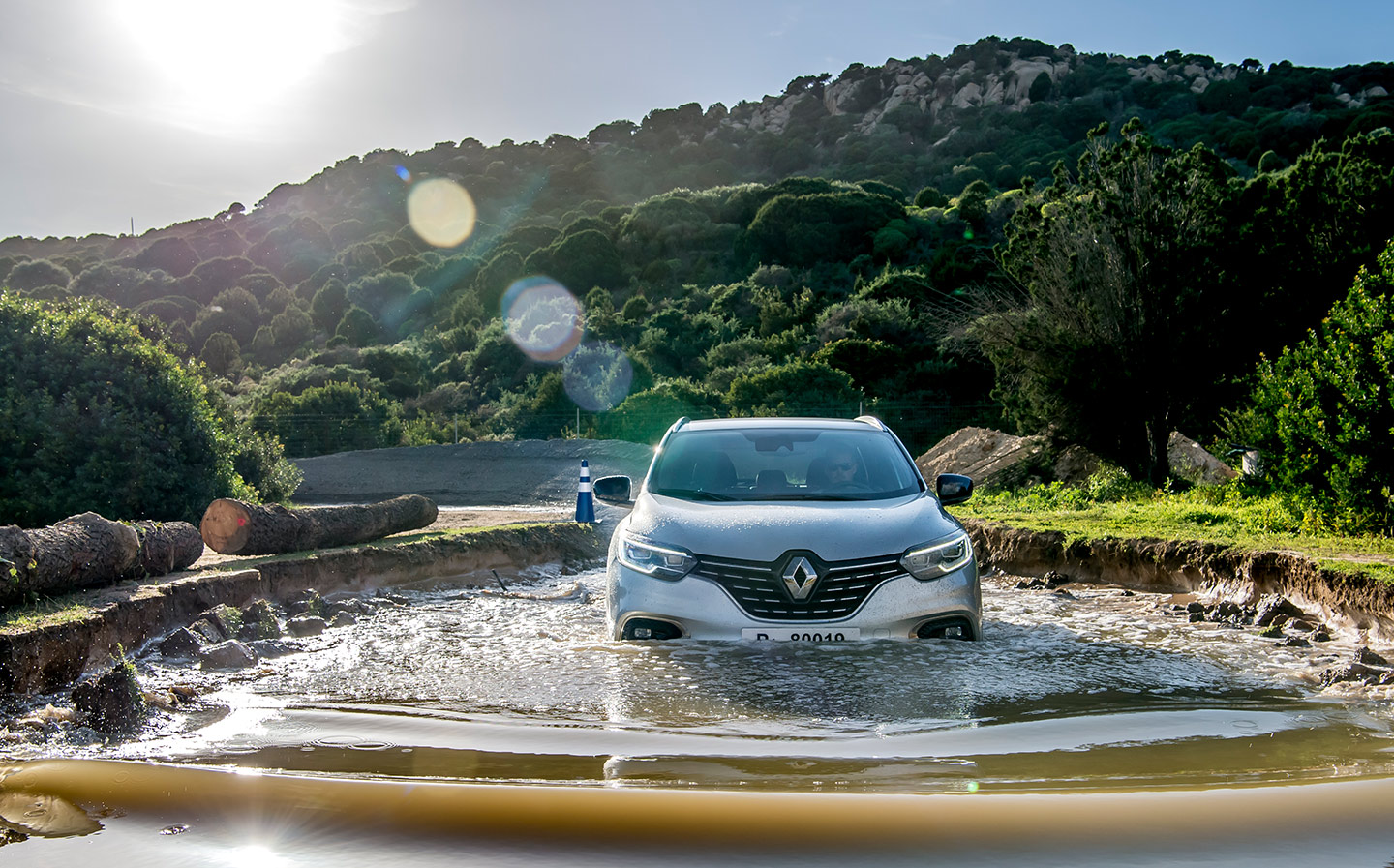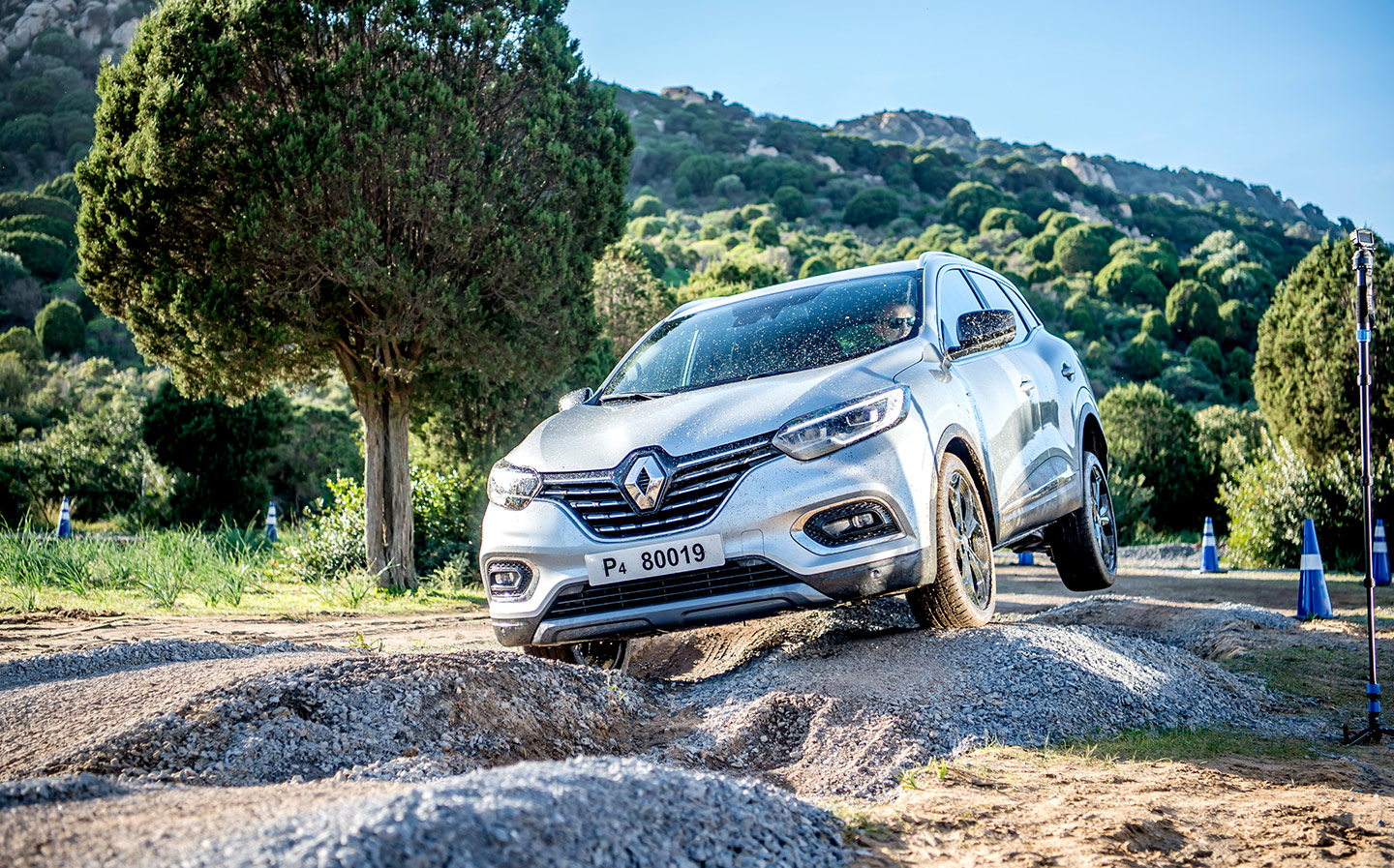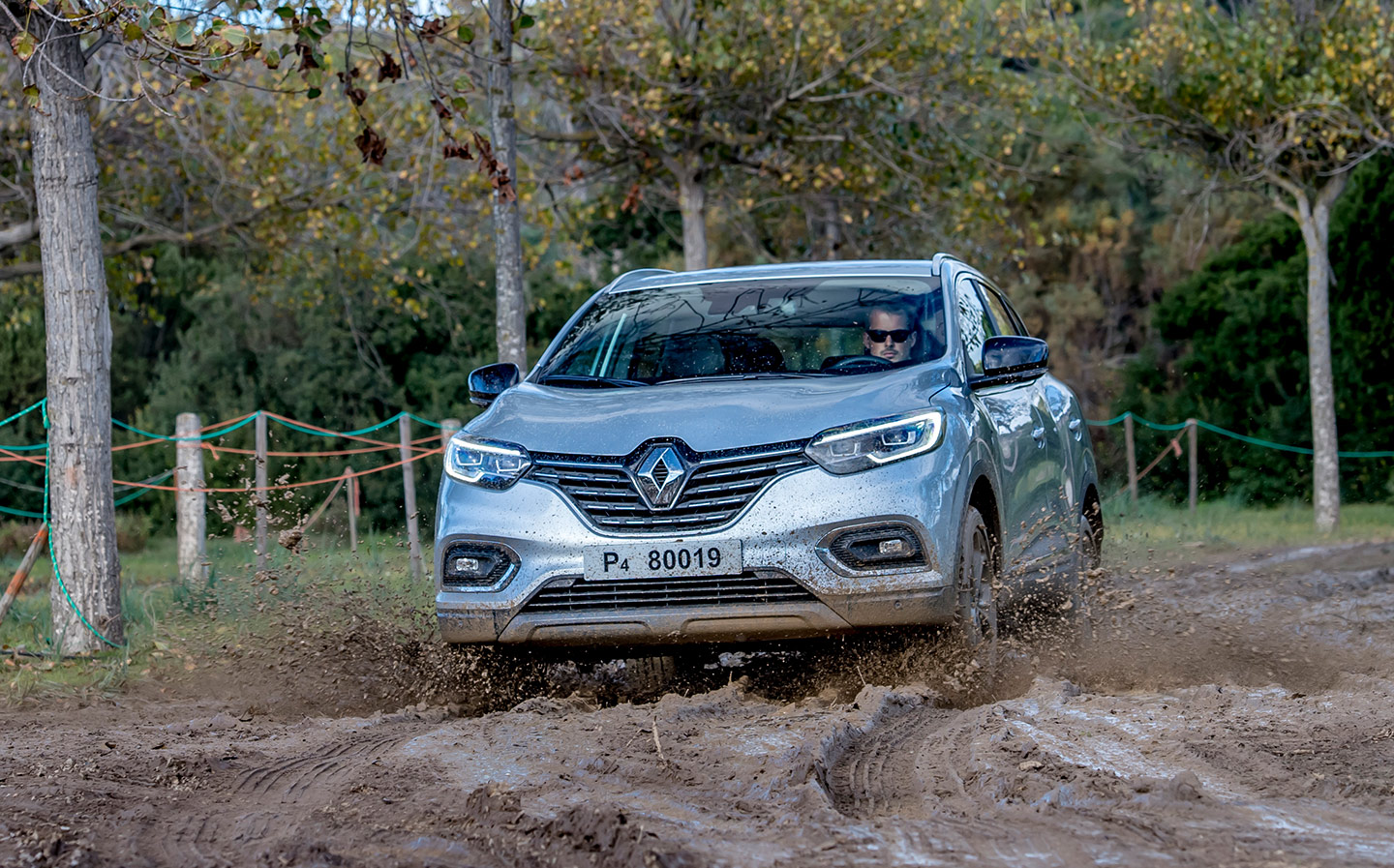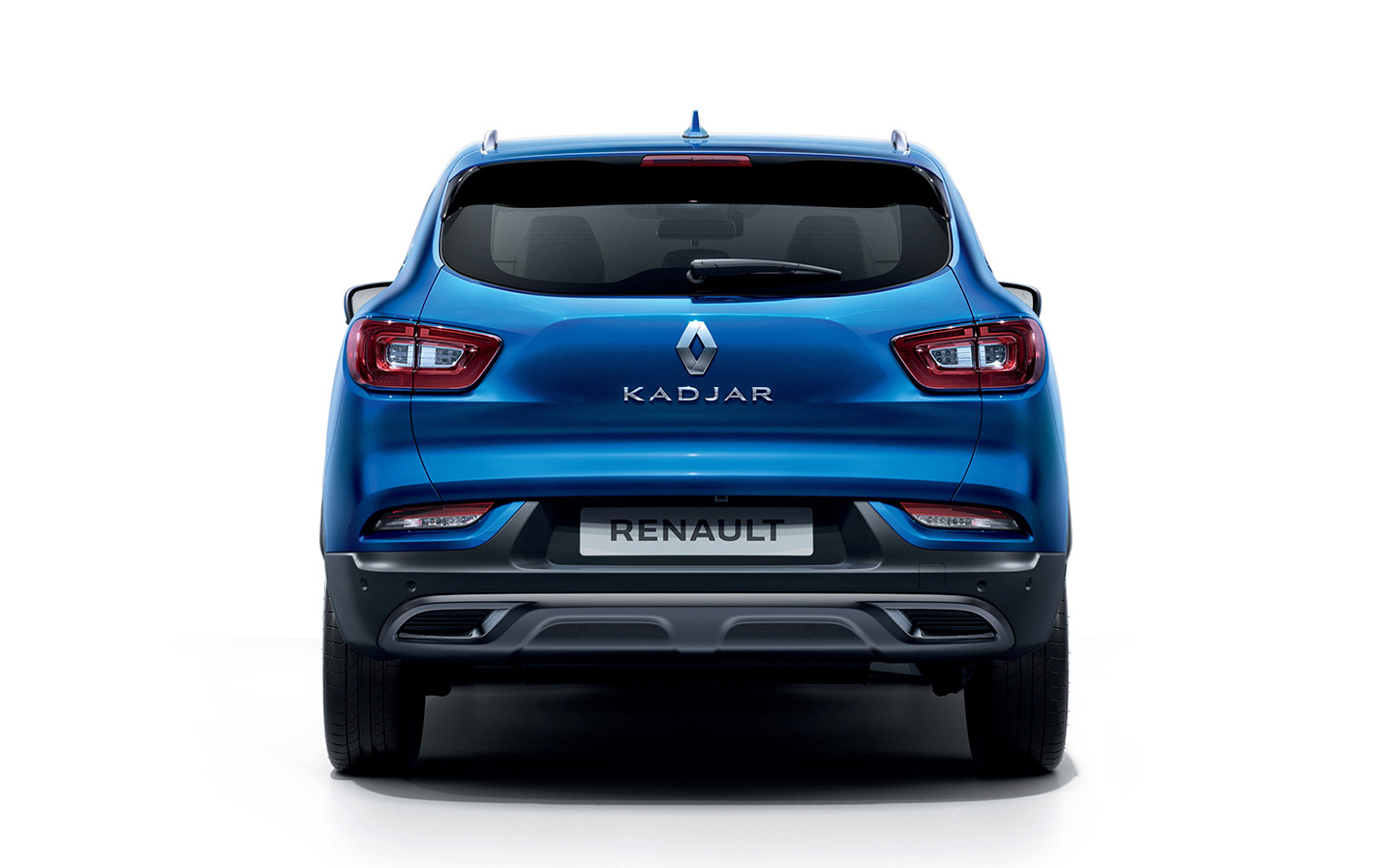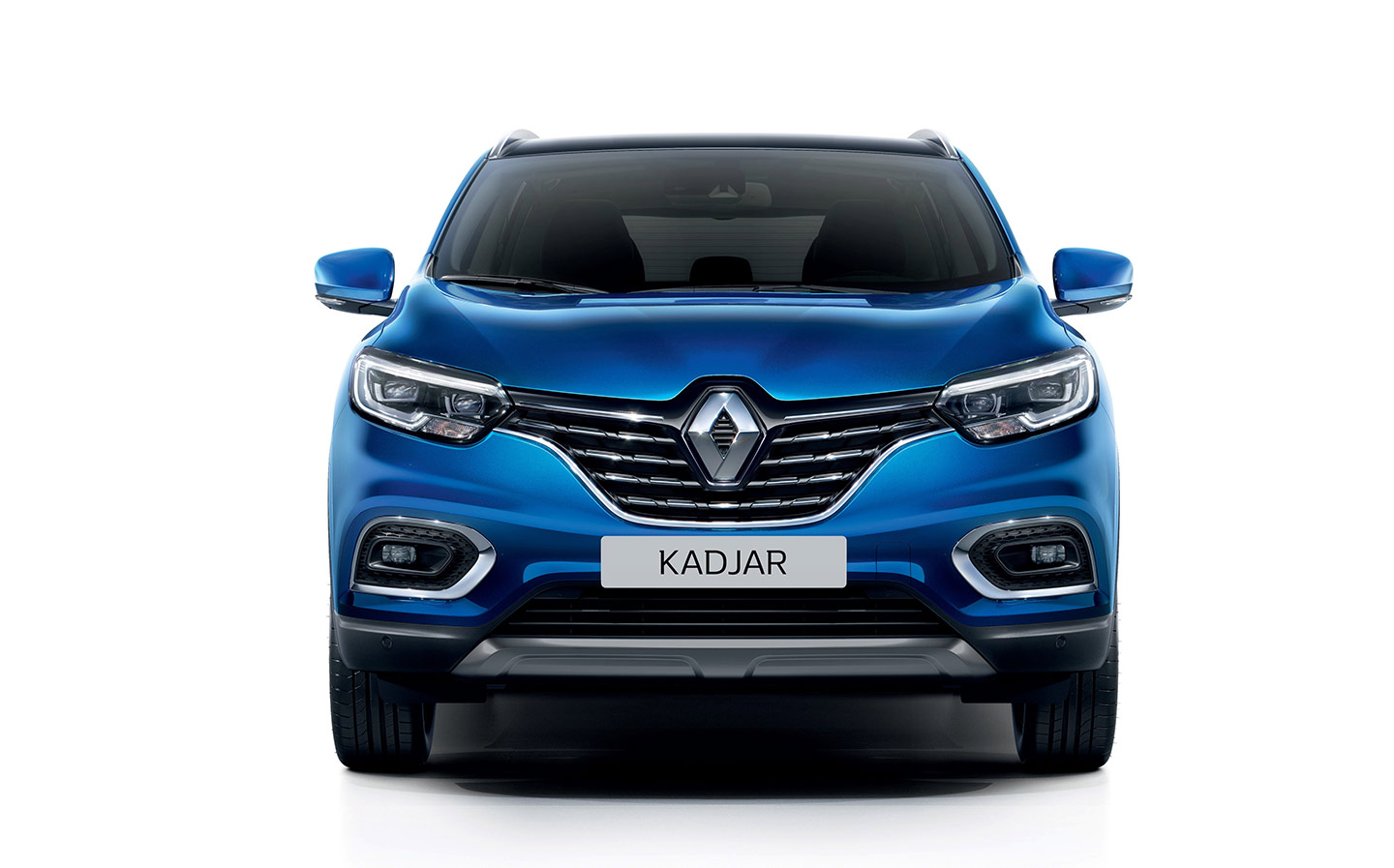2019 Renault Kadjar review
Yippee ki-yay, it's a mud plugger
IT’S ALWAYS fun when I meet a Kadjar owner. “What car do you own?”
“A Kadjar.”
“Bless you.”
But the success of Renault’s mid-size SUV is no joke — 450,000 have been sold worldwide since it launched in 2015, and now here comes the refreshed version with a heap of decent styling, trim and engine updates that should keep the ball rolling.
The Kadjar was never the most striking of cars to look at — its design could be described as “generic crossover” — but it’s not ugly by any stretch, and the new model brings some extra aesthetic appeal, with a wider front grille, LED running lights and front fog lights on every model, new rear light clusters and bumper, and three new paint colours to choose from. Iron Blue is a particularly interesting one, given that iron generally isn’t blue.
The new Kadjar’s dimensions remain the same inside and out but the number of trim levels has been slimmed down, from five to four, starting with “Play” and moving up through “Iconic” and the new “S-Edition” to the range-topping GT Line.
Prices start at £20,595 for the entry-level Kadjar; a fraction more than the most basic Nissan Qashqai, which is exactly the same car underneath (although everything a customer can see or touch is unique to the Kadjar, Renault says). But the pricing is very reasonable given that the SEAT Ateca and Ford Kuga, two of the 40 major competitors, cost upwards of £21,880 and £22,910 respectively.
And don’t think Renault is skimping on kit, to keep costs down; the entry-level Kadjar Play is packed with 17-inch alloy wheels, tinted windows, automatic headlights, rain-sensing windscreen, rear parking sensors, cruise control, climate control and a more responsive 7in touchscreen as standard.
Renault said it listened to customer feedback, resulting in changes such as backlit window and mirror controls, with one-touch opening on all four windows and larger door bins to hold a 1.5-litre drinks bottle. The most noticeable change over the old Kadjar is to the air conditioning controls, with the new three-dial system being much smarter than the previous, more fussy arrangement.
Materials inside remain largely unchanged, though. That’s not a bad thing, with a mix of hard and soft-touch plastics, and leather brought into the mix on the top grade. The “3D effect” quilted fabric seats are comfortable and there’s plenty of space in the front, with decent room in the rear, too.
It’s odd that DAB digital radio is only available on Iconic spec-and-up Kadjars, but all models’ infotainment systems can run Apple Carplay and Android Auto, meaning even owners of the Kadjar Play can get BBC 6 Music, Virgin Radio and so on via their smartphone.
Carplay and Android integration also means that the built-in TomTom LIVE sat nav, which is also available from Iconic trim upwards, is immediately redundant, given apps like Google Maps and Waze do a superior job and will be more future-proof, arguably.
The £22,095 Iconic model looks more worthwhile when you consider that it adds 19in alloys, front parking sensors, reversing camera, keyless entry, roof bars, folding mirrors, and air vents and USB sockets for the rear passengers.
Go for the S-Edition (from £23,595) and you get full LED headlights, LED fog lights, chrome detailing on the skid plates, unique upholstery with blue stitching and a panoramic sunroof.
The top-spec GT Line (from £25,095) brings a full leather interior with heated front seats, 360-degree cameras, puddle lamps, hands-free parking and a blind-spot warning system.
Renault has revised the engine range this time around, with eight engine and transmission options. If you want petrol, there are 138bhp or 158bhp options, while the two brand new diesel motors come with 113bhp or 148bhp.
The smaller petrol and diesel can be mated to a seven-speed auto gearbox, while the larger engines come with a six-speed manual only, and the bigger diesel can be either two- or four-wheel drive. There’s no hybrid at this time, but Renault’s family car product planner told me they’re working with Nissan on electrified powertrains for the next Kadjar and Qashqai.
We drove both petrol motors and the larger diesel, and both ‘boxes. The petrols both proved quite diesel-like in their mannersFddo, with oodles of torque above around 1,700rpm. They also pull well over a wide power band, meaning low-speed manoeuvring is a doddle and overtaking is just as painless. They do sound a little gruff for petrol engines at low revs, though.
The six-speed manual transmission is so smooth it’s like the box is full of treacle, but it’s a long lever with a long throw, and is quite loose in the gate. The automatic shifts cogs quickly and generally picks the right one at the right time, but we slid the lever across to allow manual shifting through twisty sections of road, as acceleration out of corners can be a little hesitant if left to the computer.
Interestingly, fuel economy and emissions levels actually improve with the automatic transmission, according to the latest official tests. By choosing it over the manual you’re looking at 51.3mpg rather than 47.9mpg on the entry-level petrol Kadjar, and 131g/km instead of 134g/km of CO2. It’s the same story with the diesels, according to the figures published by Renault, so we’d got auto if buying one for ourselves.
Handling and ride quality are much the same as before, with body roll noticable when compared to a hatchback, though not excessive, and a decent feel through the wheel. Renault says they focused hard on comfort when it came to tuning the suspension, but our test cars proved to have a relatively firm ride, meaning bumps in the road (there were plenty of broken roads in Sardinia, making it quite a good indicator of what to expect in the UK) are transferred through the chassis. It’s not an uncomfortable ride by any means, but we’d seriously consider a model with 17in wheels over the 19s, if we were speccing our own Kadjar.
We also got a taste of the 148bhp diesel in 4×4 guise on a dedicated off-road course. Crossovers like the Kadjar aren’t true off-roaders but Renault were at pains to prove the Nissan-derived system can handle more than a gravel driveway during the car’s international launch.
It can be set to two-wheel drive, automatic four-wheel drive — whereby it detects loss of traction and diverts up to 50% of the torque to the rear wheels — or “Lock”, which gives you a permanent 50:50 front-rear split, up to 50kph (31mph).
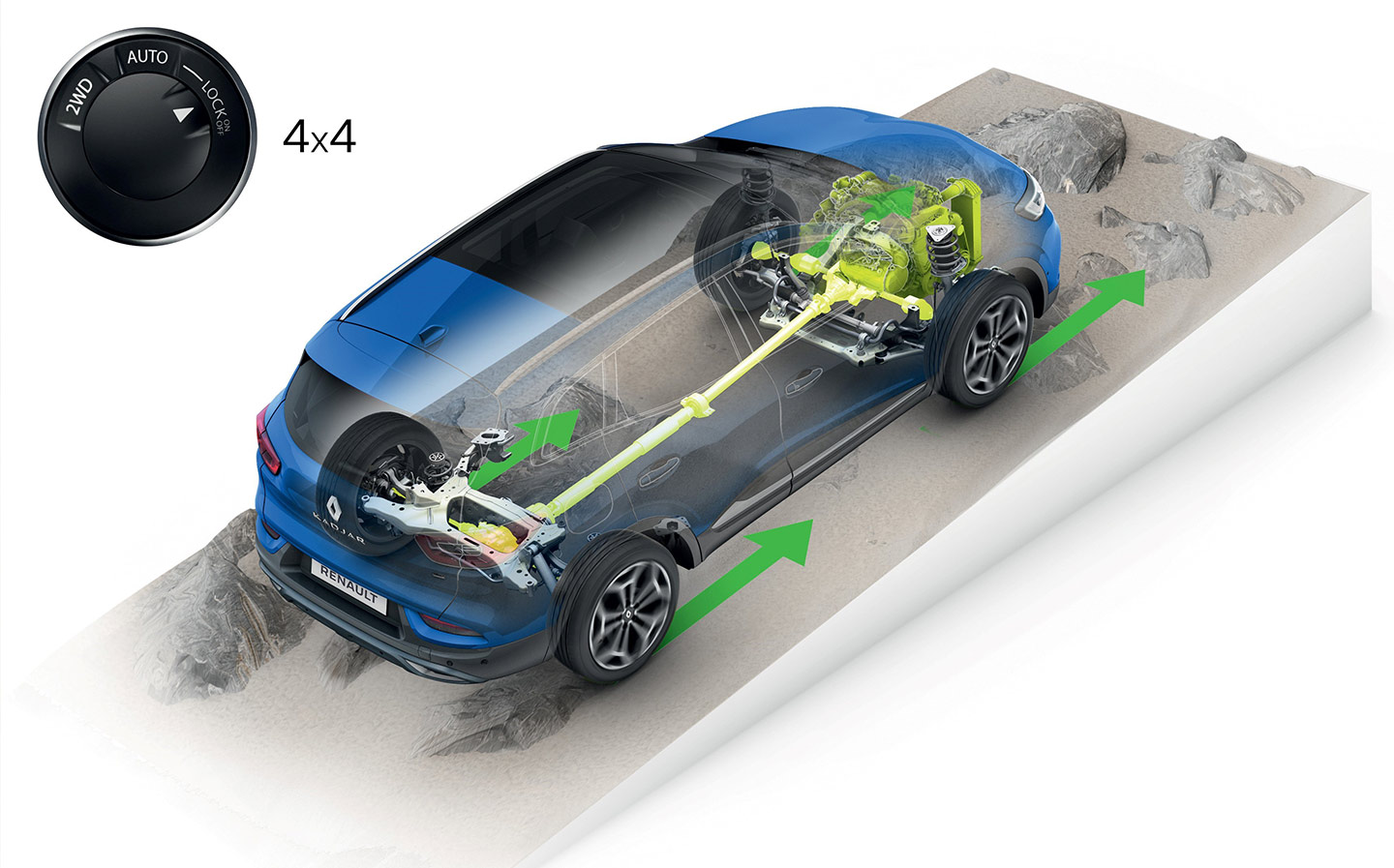
We stuck a manual Kadjar 4×4 in Lock mode and took it around a dedicated off-road course, which included deep mud ruts, moguls and 25-degree lean angles (the pics in the gallery are of this exact course), and it didn’t skip a beat.
Most impressively, the water splash— which was deep enough to bring a chill to the footwell — was shrugged off without breaking a sweat. The Kadjar can wade to a depth of 450mm, apparently.
I was genuinely shocked by its off-road prowess, especially given it was fitted with road tyres and the largest 19in alloys. A proper off-road enthusiast may be interested in details such as 200mm of ground clearance, an angle of attack of 17 degrees and an angle of departure of 25 degrees. Most of us just need to know that the 4×4 Kadjar is a surprisingly capable machine on the rough stuff.
Bad things? Well, the wind noise from the large wing mirrors is quite noticeable at speed, and Renault hasn’t managed to eradicate the irritating squeaks and rattles around the cabin. But overall the new Kadjar (gesundheit) is a more compelling proposition than ever, and still at a very competitive price.
Head to head
Renault Kadjar vs Seat Ateca
| 2019 Renault Kadjar GT Line TCe 140 EDC Auto | 2019 SEAT Ateca SE Technology 1.5 TSI EVO DSG 150 PS | |
| Price (OTR) | £25,895 | £26,730 |
| Power | 138bhp | 148bhp |
| 0-62mph | 9.6sec | 8.6sec |
| Top speed | 126mph | 123mph |
| Economy (official combined) | 51.3mpg | 49.6mpg |
| CO2 | 131g/km | 129g/km |
| Boot space (seats up) | 527 litres | 510 litres |
| Dimensions (L x W x H) | 4,489mm x 1,836mm x 1,613mm | 4,363mm x 1,841mm x 1,615mm |


